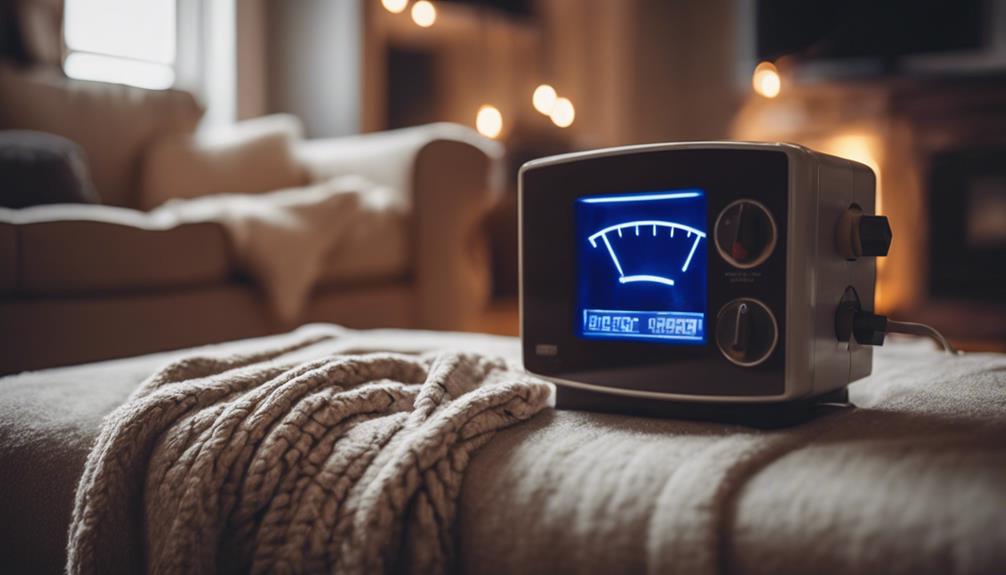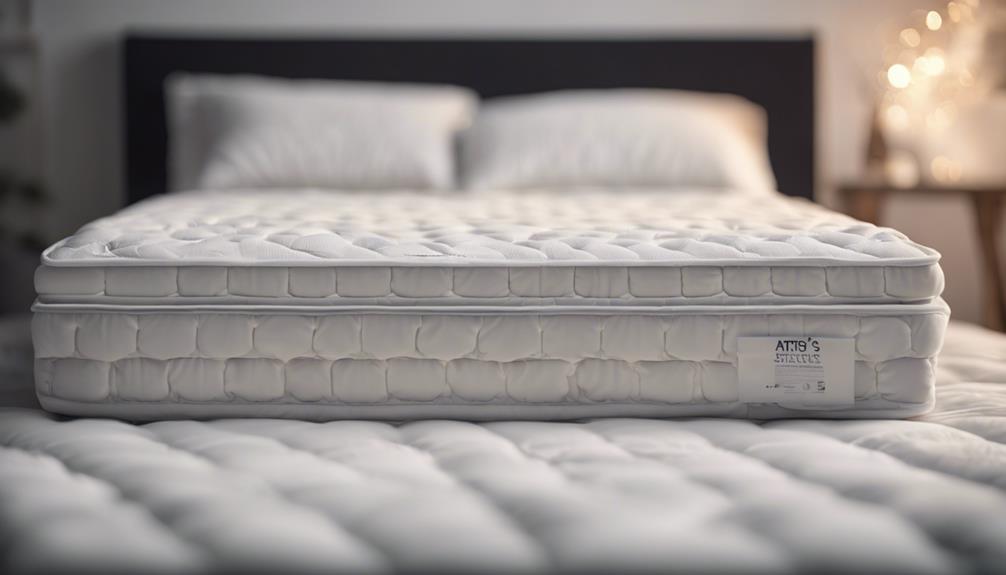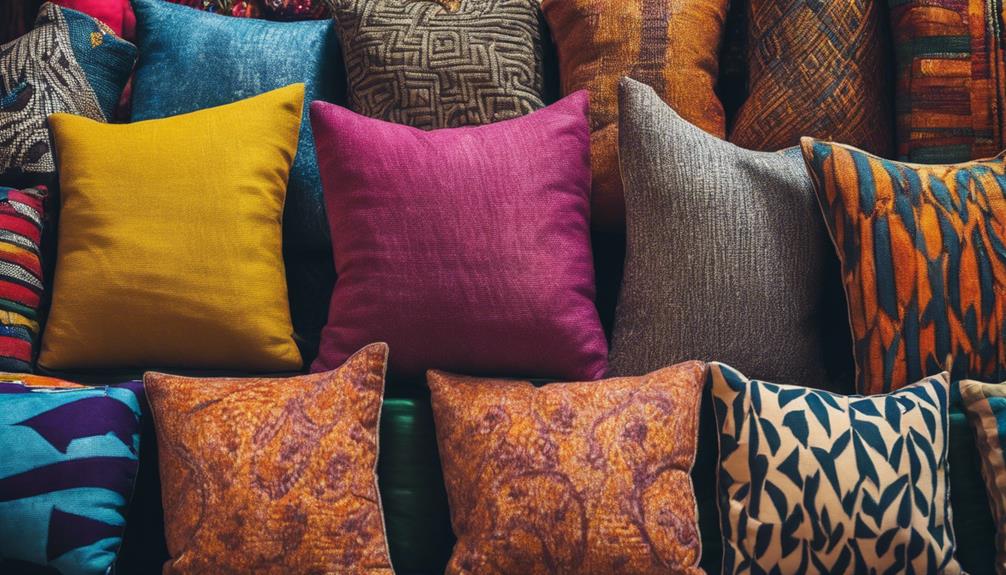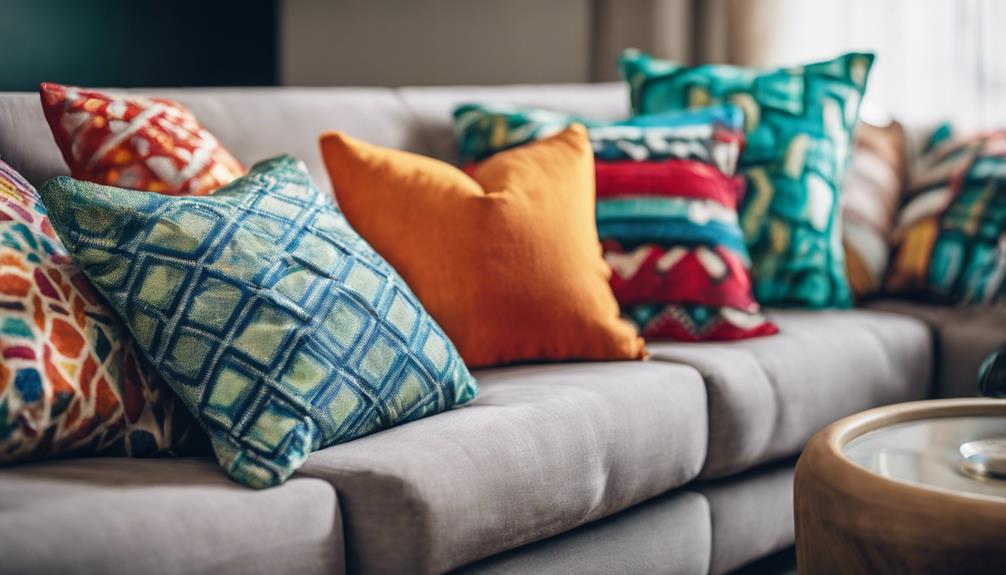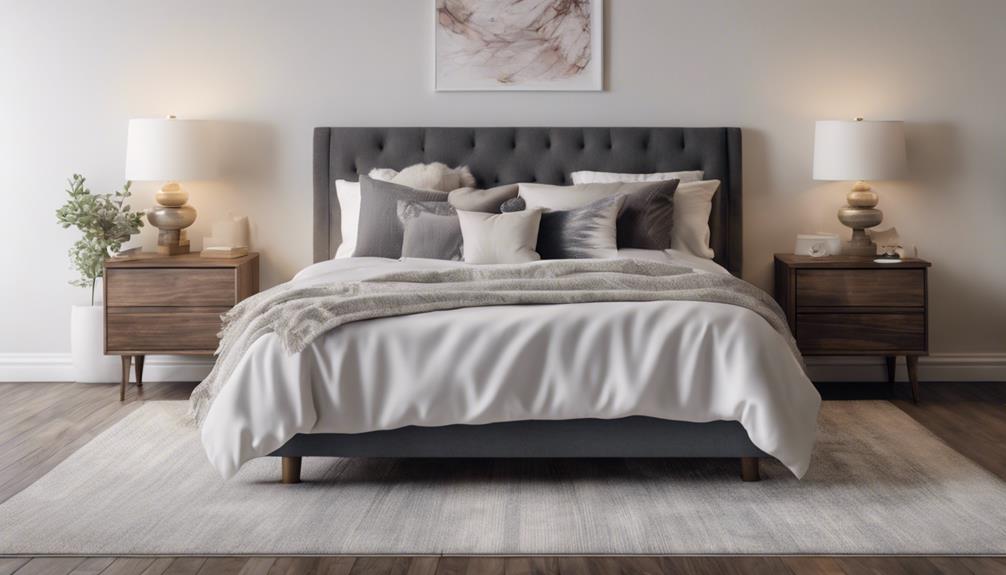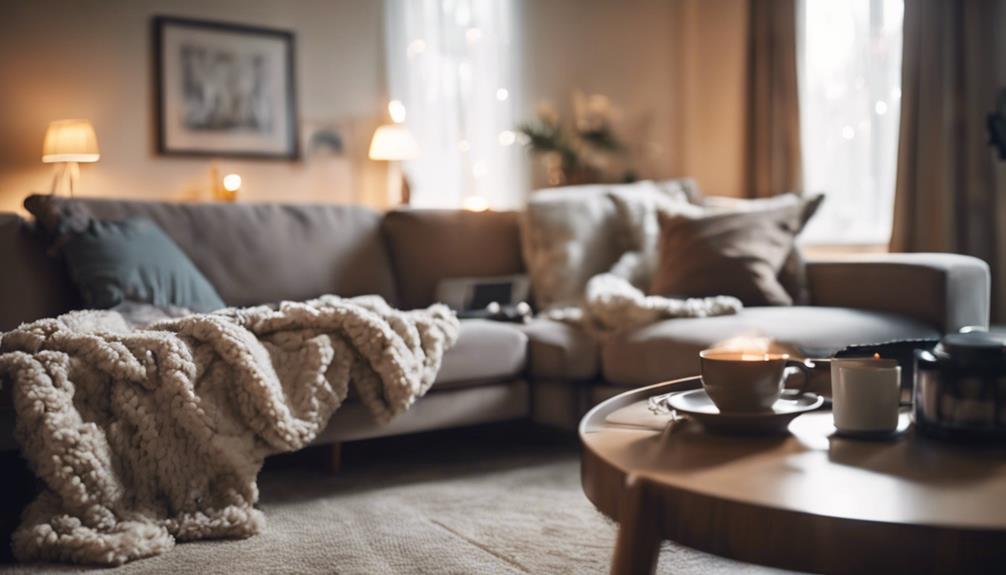Running an electric throw typically costs 2-4 cents per hour, providing affordable warmth on chilly days. Energy consumption hovers around 200 watts hourly, with usage habits being essential for estimating costs. By using a 200-watt electric throw for 5 hours daily, one consumes 1 kilowatt-hour, aiding in forecasting monthly costs. By calculating wattage against hours used and understanding electricity rates, one can make informed decisions on cost-effective heating solutions. Electric throws offer personalized warmth, outshining room heaters in efficiency and expense. Considering wattage, usage patterns, and cost-saving tactics like insulation can optimize heating expenses. Optimize your comfort and savings by exploring other energy-saving tips.
Key Takeaways
- Electric throws cost approximately 2-4p per hour to run.
- Wattage determines energy consumption.
- Usage hours impact monthly running costs.
- Opting for electric throws saves on expenses.
- Comparatively, electric throws are cost-effective for personal warmth.
Electric Throw Energy Consumption
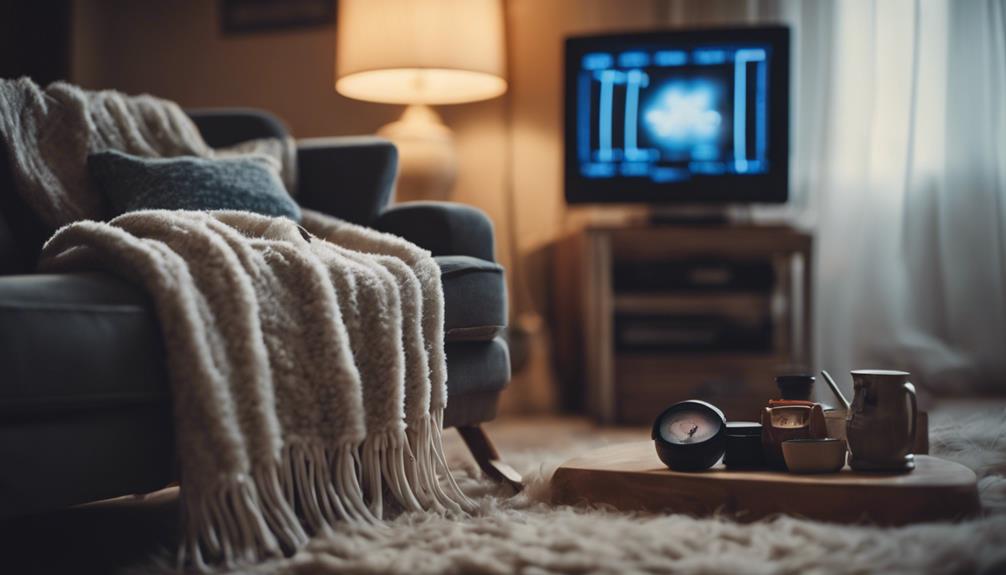
When calculating the cost of running an electric throw, it's important to take into account its energy consumption, typically around 200 watts per hour. This wattage indicates the amount of power the electric throw uses during operation. Understanding the energy consumption of the electric throw is vital in estimating the cost to run it.
By knowing the wattage, you can calculate how much electricity it consumes over time. Daily usage hours play a key role in determining the overall cost. For instance, if you use a 200-watt electric throw for 5 hours a day, you'd consume 1000 watt-hours or 1 kilowatt-hour per day.
Multiplying this by your electricity rate helps you determine the daily cost of running the electric throw. By considering the wattage and usage time, you can accurately estimate the monthly running cost by extrapolating the daily cost over the entire month.
Calculating Electric Throw Running Costs
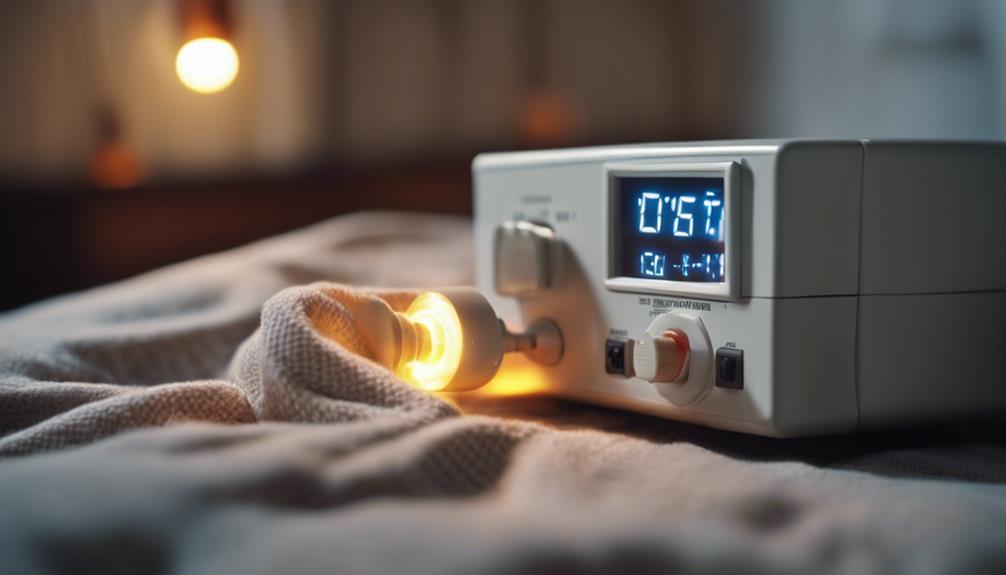
To accurately determine the cost of operating an electric throw, one must consider its wattage and the current electricity rate per kilowatt-hour. Electric throws are known for their energy-efficient heating capabilities, costing approximately 2-4p per hour to run. These blankets are designed to offer targeted heating, focusing on personal warmth rather than heating an entire room. By utilizing lower energy levels compared to traditional room heaters, electric throws provide a cost-effective solution for staying warm during colder months.
Calculating the running cost involves multiplying the wattage of the electric throw by the number of hours it's used, then dividing that by 1000 to get the kilowatt-hours consumed. This value is then multiplied by the electricity rate per kilowatt-hour to determine the total cost of running the electric blanket. Understanding these factors can help individuals make informed decisions regarding the use of electric throws for efficient and affordable heating solutions.
Comparing Electric Throw Costs
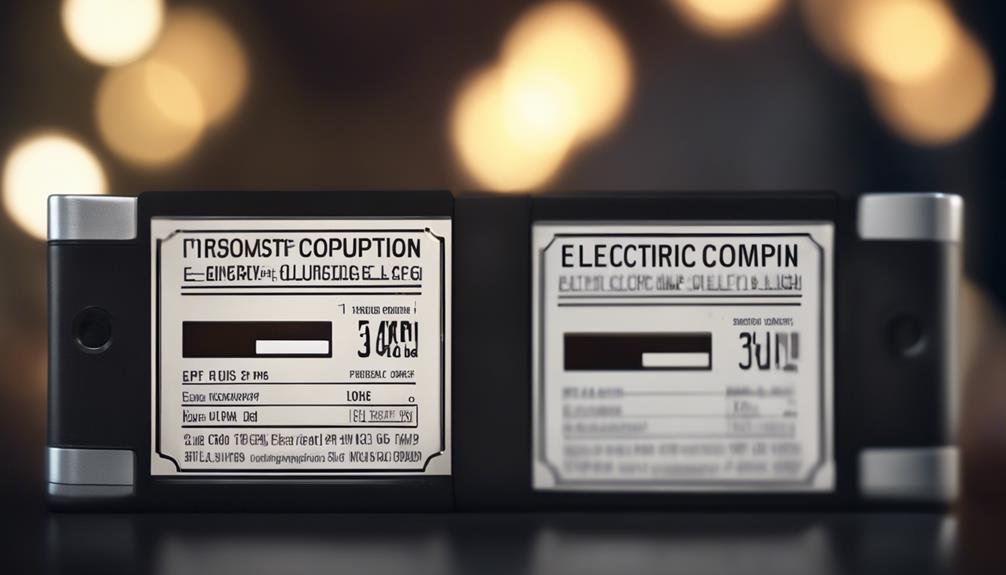
In comparing electric throw costs, we find them to be a more budget-friendly option for personal warmth when contrasted with traditional room heaters. Electric throws are an energy-efficient heating option that offers affordable and efficient warmth. Let's take a look at a comparison between the running costs of electric throws and room heaters:
| Heating Option | Cost per Hour | Energy Efficiency |
|---|---|---|
| Electric Throw | 2-4p | High |
| Room Heater | 61p | Low |
As shown in the table, electric throws cost less to run, ranging from 2-4p per hour, making them a cost-effective choice for providing personal warmth. On the other hand, room heaters consume more energy, costing around 61p per hour to operate. The minimal electricity usage of electric throws not only saves on expenses but also contributes to their efficiency in heating. Opting for an electric throw can help you stay warm without breaking the bank while being mindful of energy consumption.
Factors Affecting Electric Throw Expenses

Understanding the factors that influence electric throw expenses is vital for managing heating costs efficiently. The wattage of the electric throw plays a significant role in determining running costs, with wattages typically ranging from 50 to 200 watts. Higher wattage electric throws will result in higher running costs per hour.
Monitoring your usage patterns and adjusting settings accordingly can help control electricity expenses associated with using an electric throw. It's essential to take into account factors such as daily usage hours and the specific wattage of your electric throw when estimating running costs accurately.
Tips to Reduce Electric Throw Expenses
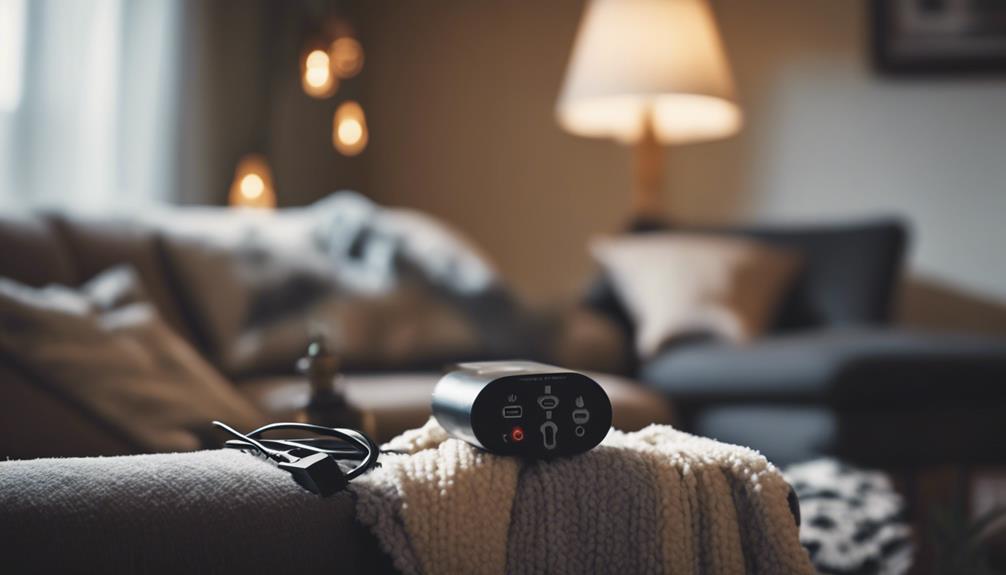
To reduce electric throw expenses, we can implement energy-saving techniques such as:
- Lowering the temperature setting and using the throw only when needed.
- Insulating our homes to help retain heat efficiently, reducing reliance on the electric throw for warmth.
- Considering energy-efficient models and using timers to achieve cost-effective heating solutions and optimize power consumption.
Energy-Saving Techniques
How can we efficiently reduce the expenses associated with running an electric throw? Here are some energy-saving techniques to help us lower costs and enhance efficiency:
- Adjust the Temperature Setting: Lowering the temperature setting on the electric throw can lead to significant reductions in energy consumption.
- Utilize an Automatic Timer: Using an automatic timer to turn off the electric throw after a set period can result in savings on electricity costs.
- Insulate the Room: Insulating the room by closing doors and windows while using the electric throw can help retain heat, reducing running expenses.
Cost-Effective Heating Solutions
To maximize cost savings on operating an electric throw, implementing strategic heating practices plays an important role in reducing expenses effectively. When it comes to cost-effective heating solutions, electric throws are a great option due to their energy efficiency and targeted warmth provision. Here are some tips to optimize the cost-effectiveness of using electric throws:
| Tips for Cost-Effective Heating Solutions |
|---|
| Lower energy consumption by heating only yourself |
| Monitor usage patterns to adjust heating settings efficiently |
| Opt for targeted warmth, reducing the need for central heating systems |
| Save significantly on heating expenses with electric throws |
| Choose energy-efficient options for cost-effective heating |
Efficient Power Consumption
Considering the aim of minimizing expenses, what key strategies can we employ to enhance the efficiency of electric throw power consumption?
- Adjust the electric throw to lower heat settings to reduce power consumption.
- Limit the duration of use to only when necessary to save on electricity costs.
- Unplug the electric throw when not in use to prevent standby power consumption.
These strategies can greatly impact the efficiency and running costs of using an electric throw. Additionally, considering a programmable outlet or timer to control usage periods can further improve energy savings. Regularly checking for damage ensures the electric throw operates at its peak efficiency, contributing to cost-effectiveness in the long run.
Conclusion and Recommendations

As we conclude our discussion on the cost of running an electric throw, it's essential to ponder a cost comparison analysis, energy efficiency tips, and budget-friendly heating solutions.
Understanding the expenses of different heating methods can guide us in making informed decisions on our energy usage.
Cost Comparison Analysis
After analyzing the cost comparison between running an electric throw and a traditional heater, it's evident that electric throws present a noticeably more economical heating option.
- Electric throws cost around 2-4p per hour, while traditional heaters can cost 61p per hour.
- The wattage of electric throws typically ranges from 100W to 150W, markedly lower than room heaters.
- Using an electric throw for 8 hours a night may cost around 19p, making it a cost-effective choice for staying warm during colder nights.
Energy Efficiency Tips
To enhance energy efficiency when using electric throws, it's beneficial to implement practical tips and strategies for optimizing heating costs and reducing electricity consumption.
Monitoring usage patterns and adjusting settings can help optimize energy efficiency with your electric throw. Consider using a plug-in power monitor or energy-saving power meter to track and manage electricity consumption effectively.
Exploring alternative solutions like hot water bottles can be a more energy-efficient option for staying warm while reducing the reliance on the electric throw. By taking these steps, you can optimize energy efficiency, save on heating costs, and make your heating solution more environmentally friendly.
Budget-Friendly Heating Solutions
Implementing cost-effective heating solutions can greatly reduce energy expenses while keeping you warm and comfortable during colder months.
Consider these budget-friendly heating options:
- Electric Throw: Running an electric throw costs approximately 2.2p per hour, making it an affordable heating choice.
- Energy Consumption: The energy consumption of an electric throw is similar to that of running a fridge-freezer plus one additional appliance.
- Alternative Solutions: To lower energy usage, try using a hot water bottle as an alternative to an electric throw.
Frequently Asked Questions
Are Heated Throws Cheap to Run?
Heated throws are indeed cheap to run. They typically cost around 2-4 pence per hour, making them a budget-friendly heating option. Compared to traditional room heaters that can cost up to 61 pence per hour, heated throws are much more cost-effective.
Using a heated throw is also energy-efficient, helping to save on electricity bills. Monitoring usage patterns and adjusting settings can further optimize cost-effectiveness.
Does an Electric Throw Use a Lot of Electricity?
Electric throws are energy-efficient and cost-effective heating options. They typically consume 60-90 watts per hour, costing around 1.5 to 2 cents hourly.
While they mightn't be as powerful as central heating, they provide targeted warmth. Adjusting usage patterns and settings can help manage electricity consumption effectively.
How Much Does It Cost to Run an Electric Blanket for 1 Hour?
Running an electric blanket for 1 hour typically costs between 1.5 to 2.5 cents, based on wattage and electricity rates. The cost is calculated by multiplying wattage by hours used and the price per kilowatt-hour.
For example, a 100-watt blanket running for 1 hour at $0.15 per kilowatt-hour costs around 1.5 cents. Higher wattage blankets may cost up to 2.5 cents, while lower wattage ones might only cost 1 cent.
Are Electric Throw Blankets Energy Efficient?
Electric throw blankets are indeed energy efficient. They offer a cost-effective way to stay warm, typically running at 2-4 pence per hour. Compared to room heaters, which can cost 61 pence per hour, electric throws provide significant energy savings.
Using them for personal warmth, rather than heating an entire room, further boosts efficiency. They're a smart choice for those looking to save on energy bills while staying cozy.
Which is More Cost-Effective, Using an Electric Throw or Traditional Heating?
When considering electric throw vs heating costs, electric throws can be more cost-effective for targeted warmth in a specific area. Traditional heating systems may be more costly to run throughout the entire home. Using an electric throw can help save on energy expenses, especially in colder months.
Conclusion
To sum up, when it comes to running an electric throw, the costs can vary depending on factors like energy consumption and usage patterns. It's important to calculate and compare these costs to find the most cost-effective option.
Remember, 'every penny counts,' so be mindful of your usage habits and consider ways to reduce expenses, such as using a timer or lowering the temperature setting. Make informed decisions to keep your electric throw running costs in check.
